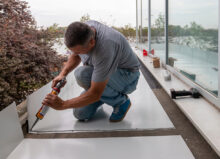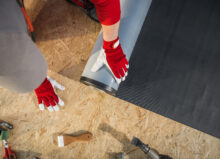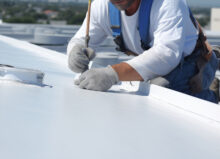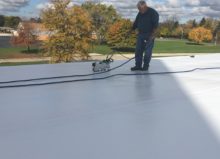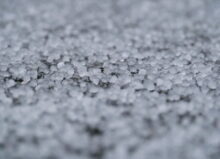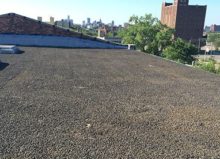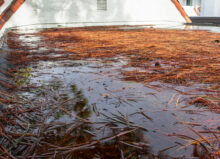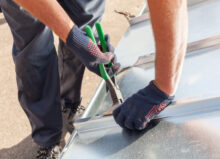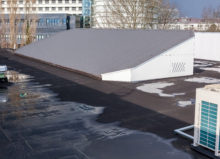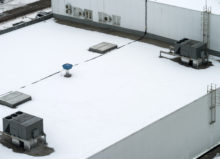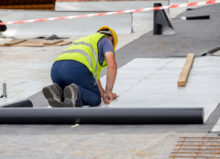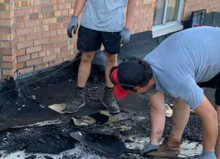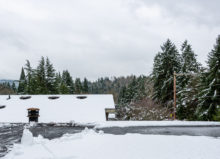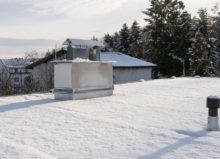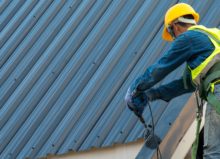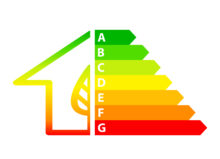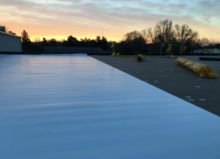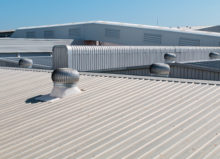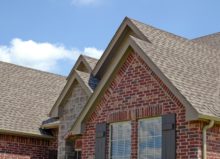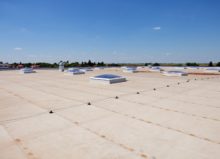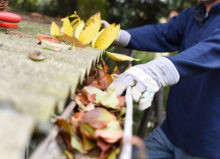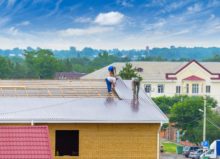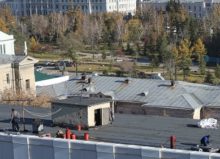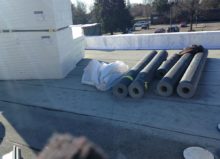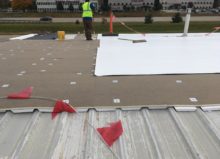How to Deal With & Prevent Ice Dams This Winter
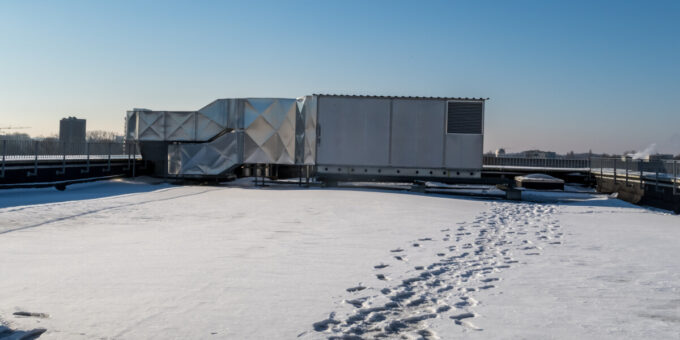
Preventing and safely removing ice dams is an important part of roof maintenance. Ice dams are crests of frozen water that develop along the edges of flat or low-sloped roofs. They prevent melting snow from efficiently draining off the surface until the water backs up and eventually seeps through even the smallest cracks.
An ice dam can cause various problems, including roof leaks, loosened or torn roofing membranes, damaged/fallen gutters, warped framing, damaged insulation, and/or sagged or stained ceilings.
When you spot ice dams, taking immediate action is crucial to mitigate the damage caused to your building.
In this article, we’ll cover everything you need to know about ice dams, including what causes them, what to do after you notice an ice dam, and steps you can take to prevent their formation.
What Causes Ice Dams?
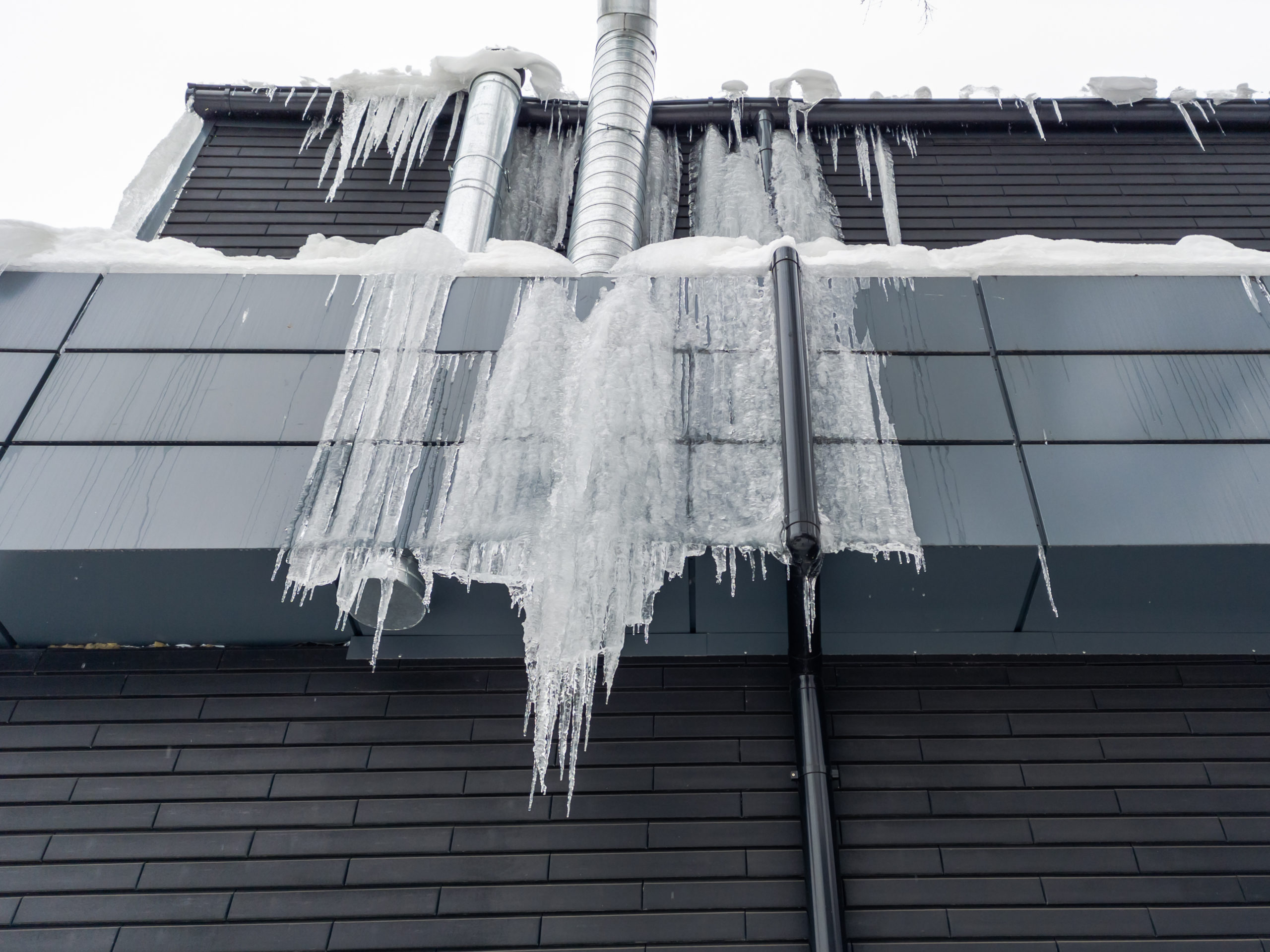 Issues with a roof’s drainage system are what primarily cause ice dams. If you have a gutter system with “bellies” in it, clogged downspouts, or another issue that stops water from efficiently draining off the roof, it can cause the water to back up, pool, and freeze.
Issues with a roof’s drainage system are what primarily cause ice dams. If you have a gutter system with “bellies” in it, clogged downspouts, or another issue that stops water from efficiently draining off the roof, it can cause the water to back up, pool, and freeze.
In general, the process goes like this:
- Snow (more than one inch) accumulates on a roof (when the temperatures are freezing or below freezing).
- The heat from inside the building rises and melts the snow.
- The gutter/downspout system doesn’t work properly.
- Water backs up and freezes along the edges of the roof.
- That frozen water prohibits melting snow from draining away.
- Some of the water from the melting snow freezes and grows into an ice dam.
- Other melting snow water backs up on and infiltrates the roofing system.
Water dams can form in as little as 24 hours. As the ice dam gains mass, the probability of significant roofing system damage increases. Also, be aware that skylights, intricate roof designs, heating ducts, and recessed lighting fixtures will increase the chances of ice dam development.
Does Commercial Insurance Cover Ice Dam Damage?
Yes, at least in most cases. The typical commercial insurance policy covers a broad range of winter weather-related problems like damage from ice dams, roof collapse due to excessive ice and snow weight, and wind damage.
It’s best to speak with your insurance agent to better understand what is covered in your specific policy.
Steps to Take after Noticing an Ice Dam
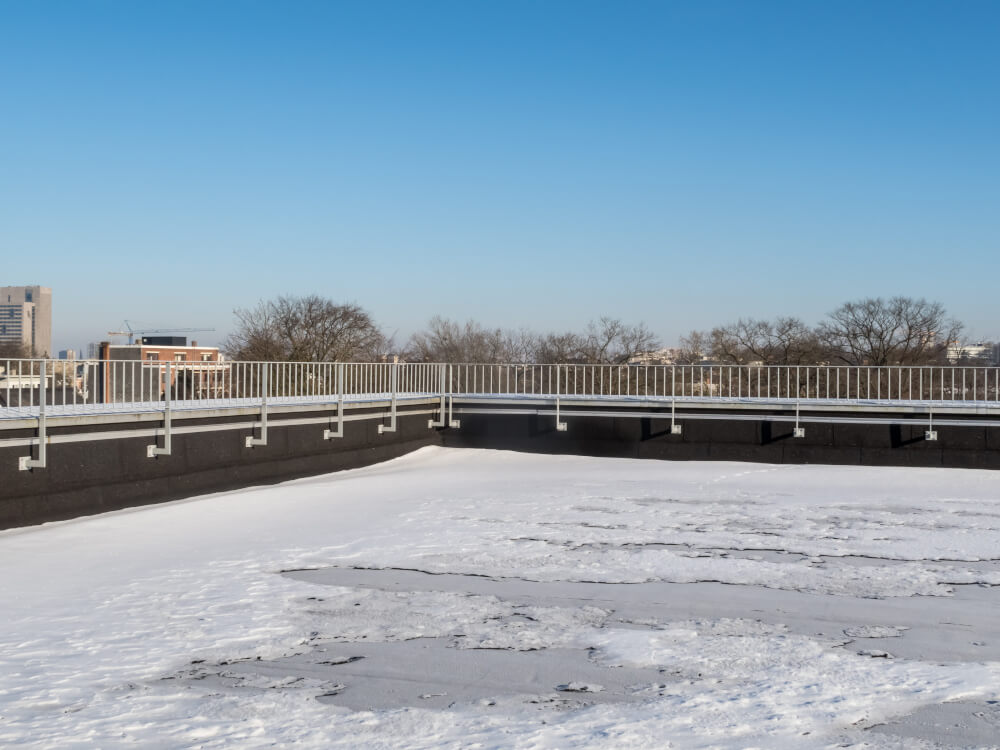 If you notice an ice dam on your roof, and it’s safe to do so, you can take immediate action to help improve the situation by cautiously using a snow shovel to remove as much of the snow from the roof as you can.
If you notice an ice dam on your roof, and it’s safe to do so, you can take immediate action to help improve the situation by cautiously using a snow shovel to remove as much of the snow from the roof as you can.
If water is leaking directly into the structure, create a few channels through the snow to expedite water shedding. A warm-water hose can help you melt the ice dam if it hasn’t already grown into an unmanageable mass.
If these steps aren’t working, call a professional immediately. Even small ice dams can weigh hundreds of pounds, which can cause significant damage to your roof.
How to Prevent Ice Dams
Although there’s no way to guarantee an ice dam won’t form on your roof, there are various preventive measures you can employ to minimize the chances of it, including:
- Schedule a professional roof inspection. A roofing expert can spot signs on your roof that may increase the probability of ice dam formation.
- Routinely maintain your gutter and downspout system. It’s important to routinely clean your gutters and remove sticks, leaves, and other debris that can prevent proper drainage. You should also ask your roofing contractor about installing leaf guard on your gutters to prevent leaf buildup in the fall.
- Be proactive with snow removal. Anticipate snowstorms and be ready to remove the snow before it accumulates too heavily on your roof. Use your snow shovel or rake carefully to avoid damaging the roofing membrane. You can also set up a snow removal program with your roofing company to ensure snow is removed promptly.
- Ensure that your attic spaces are adequately insulated and ventilated. Insulation will help keep the heat from inside the structure escaping outward and melting the snow on the roof. Additionally, proper airflow underneath the soffits and roofing vents helps maintain proper temperature inside the attic, minimizing potential ice formation on the roof.
- Hire a professional to install heated cables in your gutter system. Heated cables can help prevent ice from forming in the first place.
Schedule Ice Damage Repairs Today
Ice dams should always be taken care of immediately. Before the wintry weather sets in, be sure you have the right roofing company by your side.
Summit Commercial Roofing is a family-owned and -operated commercial flat roofing contractor that has been protecting businesses in Southeast Michigan for over five decades. Contact us today to schedule an inspection or to set up a commercial roof maintenance program. We’re here to help!

